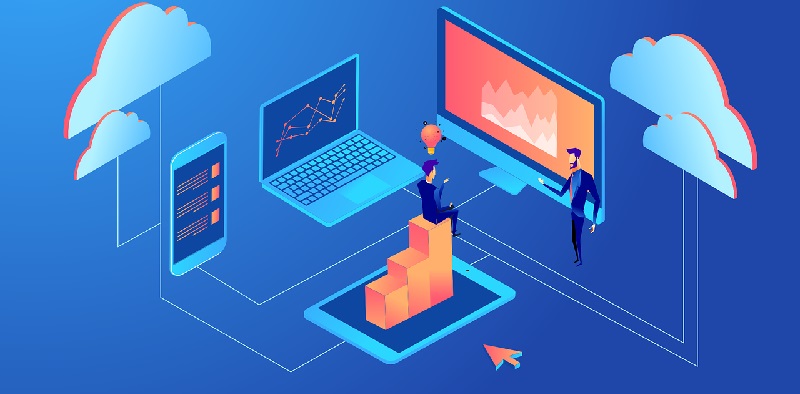In today’s digital era, the convergence of cutting-edge technologies has paved the way for a remarkable revolution. This revolution is driven by three groundbreaking technologies: cloud computing, synthetic data, and augmented reality. These transformative technologies have the potential to reshape industries, redefine possibilities, and unlock unprecedented levels of innovation.
The impact of cloud computing
One of the key driving forces behind this revolution is cloud computing. By leveraging the power of the cloud, businesses and individuals can access and analyze vast amounts of data without the need for expensive, high-end hardware. This democratization of data processing and storage has unleashed a new era of innovation, where even small businesses and individuals can harness the power of big data. The cloud enables businesses to make data-driven decisions, gain valuable insights, and unlock new opportunities for growth and success.
Democratization of data processing and storage
The democratization of data processing and storage has tremendous implications for accelerating innovation. Previously, only large organizations with substantial resources could afford sophisticated data processing capabilities. However, with cloud computing, even the smallest startups can access powerful data processing tools, algorithms, and frameworks. This accessibility empowers businesses of all sizes to experiment, iterate, and innovate at a rapid pace. The ability to process and analyse data quickly and affordably has become a game-changer in various industries.
Enhancing connectivity and collaboration
Cloud computing also enables the seamless integration of various digital platforms, enhancing connectivity and collaboration. With cloud-based collaboration tools, teams can work together seamlessly, regardless of their physical locations. This level of connectivity fosters innovation, allows for real-time collaboration, and breaks down barriers that hinder progress. Businesses can now operate in a truly global manner, with teams spread across different continents working together in real-time. This newfound connectivity has revolutionized the way organizations collaborate and work towards shared goals.
The potential of synthetic data
Another groundbreaking technology shaping this revolution is synthetic data. Synthetic data has the potential to revolutionize industries that heavily rely on data analysis, such as healthcare, finance, and marketing. With synthetic data, these industries can conduct complex simulations and analyses without the need for costly and time-consuming data collection processes. Synthetic data not only saves resources but also enables organizations to delve into scenarios that would be impractical or even impossible to explore with real-world data alone. This unlocks a world of possibilities for research, development, and problem-solving.
Simulations and analyses without costly data collection
Traditionally, data collection has been a costly and time-intensive process. It often involves acquiring, cleaning, and preparing large datasets, which may be subject to privacy and ethical concerns. However, synthetic data offers a solution to these challenges. By generating realistic yet artificially created data, organizations can bypass the need for extensive data collection processes. Synthetic data allows for the creation of diverse datasets that represent different scenarios and conditions, enabling more comprehensive analysis and experimentation. This accelerates the pace of innovation, saves resources, and addresses privacy concerns associated with data collection.
Addressing privacy concerns
In an era where privacy and data protection are paramount, synthetic data provides a viable solution. With the increasing scrutiny and regulations surrounding data privacy, many organizations struggle to extract insights while respecting individuals’ privacy rights. Synthetic data offers a way to address these concerns. By generating data that mimics real-world patterns and characteristics, but without identifying individuals, organizations can maintain privacy while still benefiting from data-driven analyses. This innovative approach allows for ethically sound data utilization and paves the way for more transparent and responsible practices.
Introduction to augmented reality
Augmented reality (AR) is the third technology fuelling this revolution. AR overlays digital information onto the physical world, creating a hybrid environment where users can interact with digital content in a more intuitive and immersive way. By using smartphones, tablets, or specialized AR devices, users can experience a new dimension of reality where virtual elements seamlessly blend with the real world. This technology has the potential to revolutionize various industries and redefine the way we interact with our surroundings.
Transforming industries
Augmented reality has the power to transform various industries, one of which is retail. With AR, consumers can virtually try on clothes, accessories, or even visualize furniture in their own homes before making a purchase. This immersive experience enhances customer engagement, reduces the likelihood of returns, and revolutionizes the way consumers shop. Education is another industry that can greatly benefit from AR. By overlaying educational content onto the physical world, students can engage in interactive learning experiences, visualize complex concepts, and deepen their understanding of various subjects.
In conclusion, the revolution driven by cloud computing, synthetic data, and augmented reality is transforming industries and redefining possibilities. The accessibility and affordability of cloud computing have democratized data processing and storage, accelerating innovation across various sectors. Synthetic data offers a solution to costly and time-consuming data collection processes, enabling simulations and analyses that were previously impractical. Augmented reality opens up new frontiers for interactive and immersive experiences in industries like retail and education. Embracing these transformative technologies can unlock unprecedented levels of innovation, reshape industries, and revolutionize the way we live, work, and interact with the world around us.

